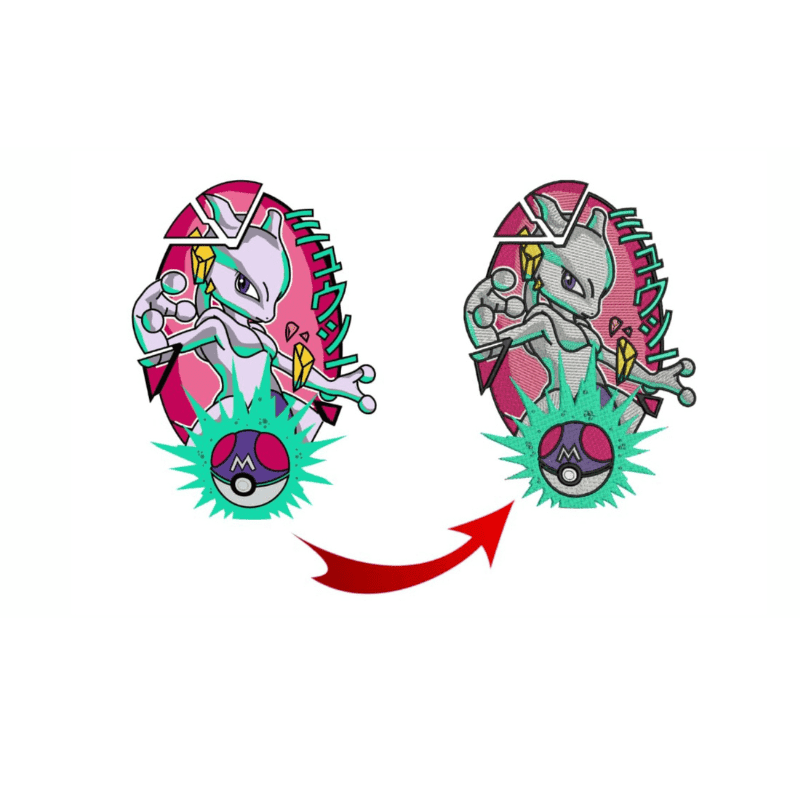Trusted Digitizing for Embroidery: Relied On by Specialists
Wiki Article
Mastering the Needlework Digitizing Process: Your Ultimate Overview
Needlework digitizing is a precise craft that calls for precision and know-how to translate complex layouts into digital styles for machine embroidery. As artisans start this trip to master the embroidery digitizing process, an extensive understanding of the fundamentals sets the foundation for quality. However, beyond the basic understanding exists a world of sophisticated software, specialized tools, and nuanced methods waiting to be checked out. By diving right into the subtleties of digitizing, one can open a globe of imaginative opportunities and boost their needlework tasks to new heights.
Understanding Needlework Digitizing Basics
Embroidery digitizing fundamentals create the foundation whereupon detailed styles are translated into machine-readable formats for precise stitching. This preliminary action in the needlework digitizing procedure is critical for ensuring that the last stitched item is a devoted representation of the original design. Recognizing needlework digitizing fundamentals includes understanding essential concepts such as stitch kinds, sew direction, density, padding, and draw payment.Stitch types play an essential duty in figuring out the visual and textural outcome of the stitched style. By choosing the appropriate stitch kind, whether it be satin, fill, or running stitch, digitizers can attain the wanted impact and boost the total high quality of the needlework. Additionally, sew instructions affects the flow and measurement of the layout, while thickness determines the spacing and coverage of the stitches.
Additionally, underlay stitching gives security to the design by safeguarding the fabric and preventing distortion throughout the embroidery procedure. Pull settlement is one more crucial consideration to neutralize the natural propensity of fabric to agreement when stitched. Grasping these needlework digitizing fundamentals is basic for producing professional-quality stitched products.
Selecting the Right Digitizing Software Program
Selecting the proper digitizing software program is a vital choice that significantly affects the effectiveness and top quality of the embroidery digitizing process. Digitizing for Embroidery. When selecting the ideal digitizing software program, it is important to think about variables such as the complexity of designs you prepare to produce, the user-friendliness of the software program, the degree of customer support provided, and the compatibility with your embroidery makerThere are different digitizing software program alternatives readily available in the market, ranging from basic programs for beginners to advanced software for expert digitizers. Some why not find out more prominent options include Wilcom EmbroideryStudio, Hatch Embroidery Software Application, and PulseID. These software application bundles provide a broad variety of tools and attributes to help you create intricate designs effortlessly.
Prior to making a choice, it is suggested to discover the various software application choices through free tests or trials to figure out which one finest suits your demands. In addition, checking out evaluations and helpful hints seeking referrals from knowledgeable digitizers can supply important understandings right into the staminas and weaknesses of each software (Digitizing for Embroidery). By very carefully assessing your requirements and contrasting the functions of different digitizing software program, you can make an enlightened option that enhances your needlework digitizing process
Digitizing Tools and Techniques

Optimizing Style Setup for Needlework
Understanding the ins and outs of design settings is basic in accomplishing optimal results in the needlework digitizing process, structure upon the foundation laid by recognizing digitizing tools and methods. When maximizing style setups for needlework, it is essential to take into consideration elements such as stitch kind, thickness, rug, draw compensation, and enrollment. Enrollment settings straighten various elements of the style accurately, maintaining overall style honesty.
Troubleshooting Common Digitizing Issues
When coming across common digitizing problems throughout the embroidery process, it is vital to comprehend the origin creates and execute reliable solutions immediately. One usual problem is stitch density problems, where stitches might be too dense, triggering the textile to pucker, or as well sporadic, bring about gaps in the style. Readjusting the stitch thickness settings in the digitizing software can assist solve this concern.Another frequent difficulty is thread breaks throughout the needlework procedure. This can take place due to various reasons such as inaccurate stress setups, plain needles, or making use of low-quality thread. Guaranteeing appropriate upkeep of the needlework maker, consisting of normal needle adjustments and tension adjustments, can minimize the incident of string breaks.
Additionally, layout enrollment mistakes can cause misaligned components within the needlework layout. Checking the design alignment in the digitizing software application and making needed changes prior to sewing can aid in preventing this problem. By attending to these typical digitizing problems quickly and successfully, you can make sure a smoother needlework process and top notch completed products.
Final Thought
To conclude, understanding the needlework digitizing procedure needs a solid understanding of the fundamentals, the best option of software application, and expertise of devices and methods. Maximizing layout setups and fixing typical digitizing Web Site problems are critical action in making certain high-quality needlework outcomes. By complying with these steps vigilantly, one can accomplish precision and performance in the digitizing procedure.Report this wiki page